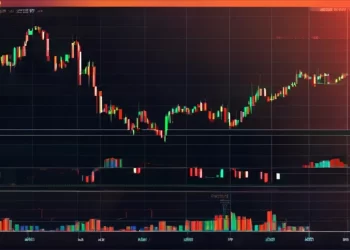Investors are interested in Polygon (MATIC), a blockchain scaling solution for Ethereum because it promises to solve Ethereum’s scalability problems. With the cryptocurrency market changing, many people are interested in knowing where MATIC’s price will end up. This article thoroughly summarizes MATIC’s price prediction for the upcoming four years (2024–2027) by examining past market movements, technical analysis, and expert forecasts.
Reflecting on MATIC’s Last Bull Run
Before delving into future forecasts, let’s review MATIC’s most recent bull run. The entire cryptocurrency market had a huge upswing in 2021, and MATIC was no different. The token price started the year at $0.02 and surged to an incredible all-time high of $2.92 in December 2021—a gain of more than 14,500%. Several reasons contributed to its quick rise, including:
Growing Need for Scalable Solutions: High petrol prices and network congestion became significant obstacles when DeFi (Decentralised Finance) apps took off on Ethereum. With its quicker and less expensive transaction times, Polygon became a competitive option, drawing users and developers to its platform.
Enhanced Uptake: MATIC collaborations with well-known blockchain initiatives and establishments also stimulated its expansion. Partnerships with organizations like Neiman Marcus and integrations with DeFi protocols like Aave and Curve increased investor confidence.
Growing Interest in Layer-2 Solutions: In 2021, Layer-2 scaling solutions became widely accepted. As a leader in this field, Polygon profited from this increasing interest.
Current Situation of Polygon
MATIC price experienced significant volatility in 2023, reaching a high of over $1.29 before tumbling to its current value of roughly $0.74. Polygon has a robust ecosystem, a thriving DeFi (Decentralised Finance) industry, and a growing number of non-fungible token (NFT) firms that use its network despite the recent decline.
MATIC Price Forecasts: A Year-by-Year Analysis
It’s well known that predicting Bitcoin prices is challenging. The prices of cryptocurrencies are determined by a complex interaction of circumstances, in contrast to traditional assets with defined valuation methodologies. However, we may estimate MATIC’s future trajectory for the following four years (2024–2027) by examining various variables. This is a thorough explanation of how each year’s predictions are made:
2024: A Year of Wary Hopefulness
Technical Analysis: To predict possible future price movements, technical analysis (TA) entails examining previous price charts and using a variety of indicators. Typical TA instruments for MATIC prediction consist of:
Moving Averages (MAs): They show trends and even out price swings. Whereas a declining 200-day MA indicates a downtrend, a rising 50-day MA indicates an upward trend.
Index of Relative Strength (RSI): This gauges price momentum and suggests situations that may be overbought or oversold. When an asset’s relative strength index (RSI) is below 30, it may be oversold and due for a price gain; when it is above 70, it may be overbought and need correction.
Support and Resistance Levels: The prices at which demand to buy or sell usually increases. Determining these levels can be useful in forecasting future price reversals or bounces.
Important Reminder: TA is not infallible, but it can be a useful tool. Past performance does not assure future outcomes, and technical indicators should be used in concert with other considerations.
Market Sentiment: The general state of the cryptocurrency market has a big influence on the price of particular tokens. MATIC may profit if significant laws or news releases foster a bullish attitude. On the other hand, a negative market can cause the price to drop. Analysis of news, social media trends, and market data can obtain sentiment insights.
Polygon’s Development Roadmap: The anticipated updates, alliances, and integrations listed in the roadmap may impact pricing estimates. Price increases may result from these programs’ successful implementation, which also boosts investor confidence. On the other hand, delays or failures could depress people.
Expert Forecasts and Price Points:
Numerous cryptocurrency platforms and analysts forecast MATIC prices. Because of the inherent uncertainty in the market, these forecasts frequently include a range. Here are a few May 2024 examples:
CoinCodex: Projects a price range between $0.74 and $0.85 for the second half of 2024. This forecast considers the market’s mood, previous pricing, and future changes to Polygon’s plan.
Anycoindirect: By the end of 2024, it is predicted to reach a maximum value of €1.32 (around $1.50). This forecast may be predicated on a more sanguine assessment of the market and Polygon’s prospective expansion.
2025 and Upward: An Examination of Long-Term Prospects
Prices become even harder to predict further into the future. But by taking into account more general patterns and prospective turning points, we might sketch a plausible scenario for the upcoming years:
2025: Polygon’s price may rise to $4.21 if it becomes a dominant Layer-2 solution and experiences broad acceptance, according to CoinCodex’s projection. Sustained development efforts, effective integrations with DeFi and other blockchain applications, and a favorable market climate would all be necessary.
2026–2027: If the blockchain ecosystem continues to expand and integrate, MATIC’s price may rise gradually. Because of the inherent uncertainty in long-term forecasts, predictions for this timeframe often fall between $2.00 and $3.00.
Recall that these are merely hypothetical situations. Unexpected circumstances, changes in regulations, or breakthroughs in technology can considerably change the trajectory of prices.
The Value of Do Your Own Research or DYOR:
Refrain from relying on price forecasts while making investment decisions. Learn everything you can about Polygon’s technology, roadmap, possible drawbacks, and the larger cryptocurrency market.Despite the clear development potential, investing in Polygon requires careful consideration. Ensure you do your homework, know the hazards, and only invest money you can afford to lose. It’s also crucial to diversify your cryptocurrency holdings.
While MATIC may have large short-term price fluctuations, long-term investors may be more interested in the project’s potential for steady growth.
Conclusion
There is no denying Polygon’s promise, even with its inherent uncertainties. It is well-positioned for the future thanks to its emphasis on scalability, expanding ecosystem, and Ethereum inclusion. Keeping up with industry developments and technological advances allows investors to make well-informed choices regarding their participation in MATIC.


























